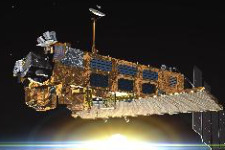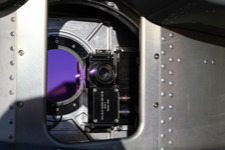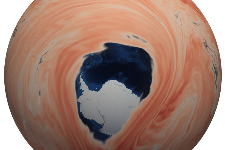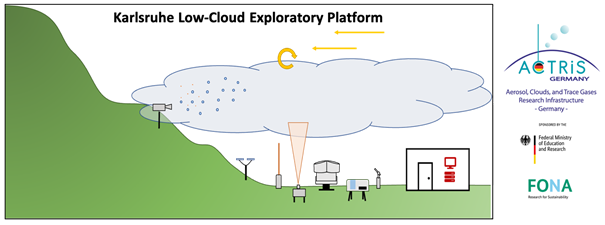Research at IMKASF
The Institute of Meteorology and Climate Research Atmospheric Trace Gases and Remote Sensing (IMKASF) is one of the world’s leading institutes in the development of novel instruments and methods for atmospheric remote-sensing and in the analysis and interpretation of the measured data.
The IMKASF has played since many years a leading role in atmospheric Fourier-transform spectrometry, as in the development of the MIPAS ("Michelson Interferometer for Passive Atmospheric Sounding") satellite instrument, that is also employed in balloon- and aircraft-borne versions for dedicated measurement campaigns. Ground-based Fourier-transform spectrometry and microwave radiometers are operated in Kiruna (Sweden), Izana (Tenerife), Karlsruhe (Germany), Addis Abeba (Ethiopia) and Merida (Venezuela), partly in frame of the NDACC ("Network for Detection of Atmospheric Composition Change"). The experience of IMK-ASF in the development and characterisation of novel instrumentation has lead to the construction of the first Limb emission spectrometer using a two-dimensional detector array (GLORIA-AB aboard the high-altitude aircraft HALO) that also provides the instrumental basis for the new satellite projects CAIRT, ATMOSAT and MTG-IRS. With the Karlsruhe Low-Cloud Exploratory Platform (KLOCX) in the European ACTRIS network, we support our research on the life cycles of low clouds and complement our satellite-based systems analysis.
For the analysis of satellite data, the program package KOPRA and the associated retrieval code RCP (Retrieval Control Program) were developed at IMKASF, and the programs PROFITT and LINEFIT for the analysis of ground-based measurements. Furthermore, at IMKASF new methods are developed for the analysis and validation of operational satellite products (as for example in the LSASAF of EUMETSAT). In-situ measurements on board of aircrafts (CARIBIC, HALO) are used to obtain highly spatially resolved data in the tropopause region. Numerical atmospheric models are indispensable for interpretation of the data from the various observing platforms (ground-based, aircrafts, balloons, satellites). In this context, the ICON-ART model system in particular is being further developed and used.
Particular highlights can be found on the pages of the different research groups, as well as on our homepage (see news). Many details are also provided in the publications of IMKASF.
Projects and Initiatives
 |
Beyond MIPAS/ENVISAT: Placing observational constraints on our understanding of the middle atmosphere (more information) |
 |
GLORIA: This unique infrared imaging spectrometer is central to various aircraft, balloon and satellite activities (more information) |
 |
ICON-ART: The next generation of an atmospheric-chemistry model system (more information) |
 |
COCCON: The "COllaborative Carbon Column Observing Network" (mehr Informationen) |
 |
KLOCX: The "Karlsruhe Low-Cloud Exploratory Platform" (mehr Informationen) |
